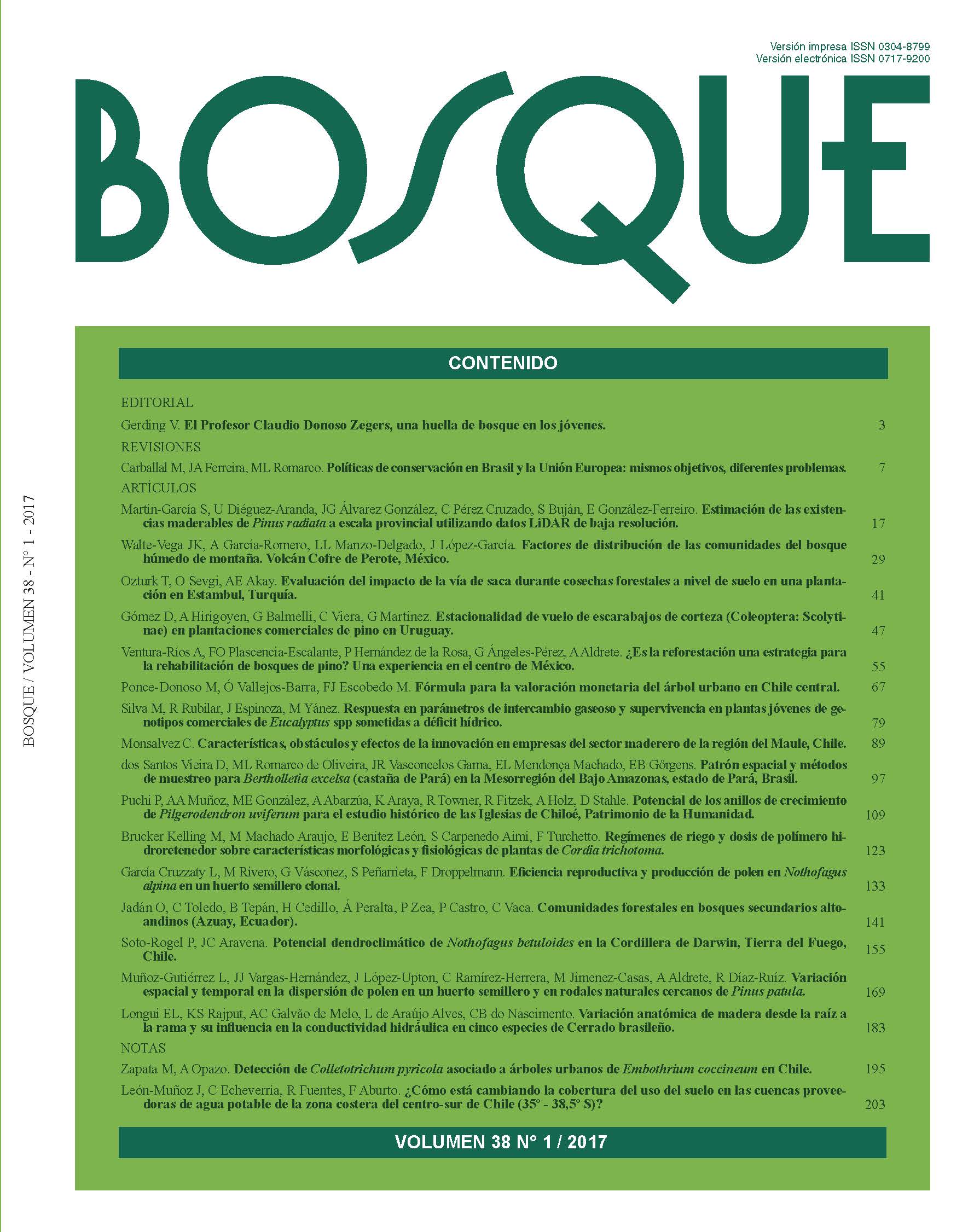Is the reforestation a rehabilitation strategy for pine forest? An experience in central Mexico
Main Article Content
Abstract
Ecological restoration is considered an important tool to reverse the degradation conditions that diverse ecosystems present worldwide, where its purpose is to recover the ecosystem structure and processes. Reforestation is a widely used strategy for restoration, which generally considers only the survival and growth as part of its monitoring. Therefore, the objective of this study was evaluating the effect of Pinus greggii introduction in the structure, biomass and the understory species diversity. Three reforested sites were selected -of 5, 12 and 14 years old-, a reference site (dominated by Pinus cembroides) and a degraded site (dominated by grasses). We established eight circular 400 m2, 100 m2 and 1 m2 plots (nested) to measure diameter, height of tree canopy, shrubs and herbaceous richness and diversity in the understory. Allometric equations were used to calculate aerial biomass. Alpha and beta diversity of the understory was determined. The highest biomass accumulation was found in the reference site (25.27 Mg ha-1), followed by the older reforestation (R14) with 14.16 Mg ha-1. These had higher species richness and diversity likewise. The Jaccard index showed larger similarity between the degraded site and the five year-old reforestation (61 %). It was found that R14 achieved accumulation of biomass, species richness and diversity similar to those from the reference site.

